
World cancer day [1], now in its 25th year, is all about hope for the future, a future where cancer will lose, on all fronts. Of course, it is about improving prevention, diagnosis, treatment and care. But it is also about reducing stigma and providing equal access to quality care. Ultimately it is about justice. Naturally, one thinks about patients and all those that bear the burden of their disease. My heart – my little tiny heart on such a grand scale – goes out to all of you.
But there are other victims of injustice that one rarely talks about: paradigm changers. Those are doctors and researchers that made breakthrough medical discoveries, took action and dared to challenge the medical establishment in place and never gave up, no matter the price they were made to pay. So, for the sake of justice let us celebrate on this special day one such hero, William Coley, the Father of Immunotherapy.
William Coley never gave up.
Perhaps because the beginning of his career as a surgeon in 1891 was marked by what he considered a terrible failure: the death of his first cancer patient, a 17-year-old woman named Bessie Dashiel. Bessie had developed a sarcoma on her hand. Coley amputated her forearm. That was supposed to cure her.
It did not.
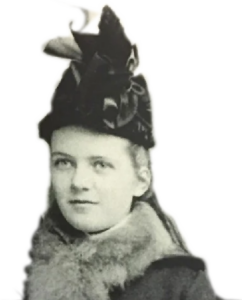
Bessie Dashiel, 17 years old, a hand sarcoma patient that Coley tried to save by amputating her arm, in vain. (Courtesy: Cancer Research Institute)
So, Coley went on a hunting expedition, sifting through different records at the New York Cancer Hospital (today’s Memorial Sloan Kettering Cancer Center), searching for other patient cases similar to that of Bessie but with favorable outcomes.
For two long weeks, he searched in vain. But then, one day, he came across the extraordinary story of a man whose sarcoma vanished after he caught erysipelas[2], an acute infection of the skin caused by various strains of streptococci. Searching more and more records, Coley found another 47 cases of cancer patients that had benefited from being infected.
Coley became convinced that severe infections could help fight-off cancer. So, he decided to run two “clinical trials” that are unimaginable today.
His first patient was Signor Zola, an Italian immigrant with an inoperable sarcoma in his head.
Coley filled a syringe with a hefty dose of Streptococcus pyogenes and emptied it directly in Zola’s tumor, with apparently little effect of any kind.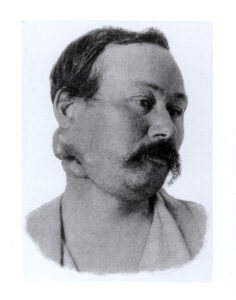
Signor Zola, Coley’s first patient, prior to therapy (Courtesy: Cancer Research Institute)
But Coley never gave up. He repeated the procedure several times over the next five months until Zola developed full blown erysipelas, high fever and all. And then something extraordinary happened: the man’s tumor began to liquefy and shrink, and vanished withing a few weeks. Zola remained disease-free for the next 8 years.
Coley’s second patient was a 16 year old boy with a large abdominal tumor . The treatment was the same but with each injection, the boy would develop high fever and his tumor would shrink.
Eight months after the first treatment, the patient was definitely cured. He died 26 years later – of a heart attack.
Effective immunotherapy was born.
Inoculating live pathogens proved very dangerous and soon two of Coley’s patients died not because of their cancer but because of erysipelas.
But William Coley did not give up.
He designed a mixture of heat-inactivated bacteria dubbed “Coley’s toxin” that ended up being administered to nearly one thousand patients over the next 40 years.
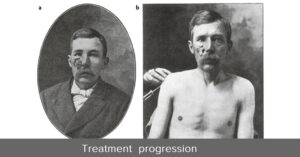
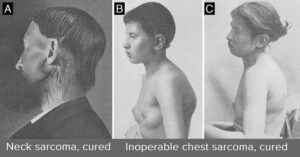
Some patients treated and cured by “Coley’s toxin “(Courtesy: Cancer Research Institute)
His success rates – the proportion of long-term cures – have never been matched by any other cancer therapeutic modality throughout the 20th century.
Sadly, Coley had little luck convincing the medical establishment that his approach warranted support and serious consideration.
There were inconsistencies in the evidence he provided: variations in the composition of his toxin mixtures, poor patient follow-up and lack of reproducibility by others.
Perhaps equally important was the fact that radiotherapy came of age at just about the same time. Many oncologists, including Coley’s boss, believed it was the best answer to all cancers. Coley’s toxin did not stand a chance.
Coley, who died in 1936, was a man before his time and the Father of immunotherapy.
In 1953, his daughter, Helen Coley Nauts, founded the Cancer Research Institute[3], a non-profit organization that exclusively funds research in cancer immunology.
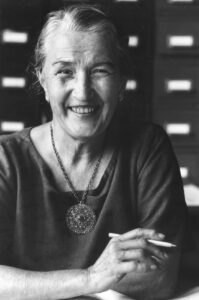
Helen Coley Nauts, founder of the Cancer Research Institute (1907-2001) (Courtesy: Cancer Research Institute)
Coley’s legacy lives in more ways than one.
If you did not know about William Coley before reading this post, a little bit of justice has been served.
Thank you!
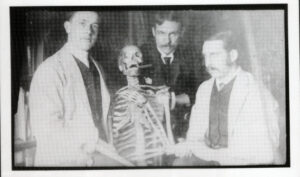
William Coley , left, enjoying a cigar by proxy 🙂 (Courtesy: Cancer Research Institute)
[1] https://www.worldcancerday.org/
[2] https://www.ncbi.nlm.nih.gov/books/NBK532247/
[3] https://www.cancerresearch.org/

2 Responses
What a great story about Coley, whom I did not on fact know; well written delightful easy read
Thank you so much Marta for your kind feedback!